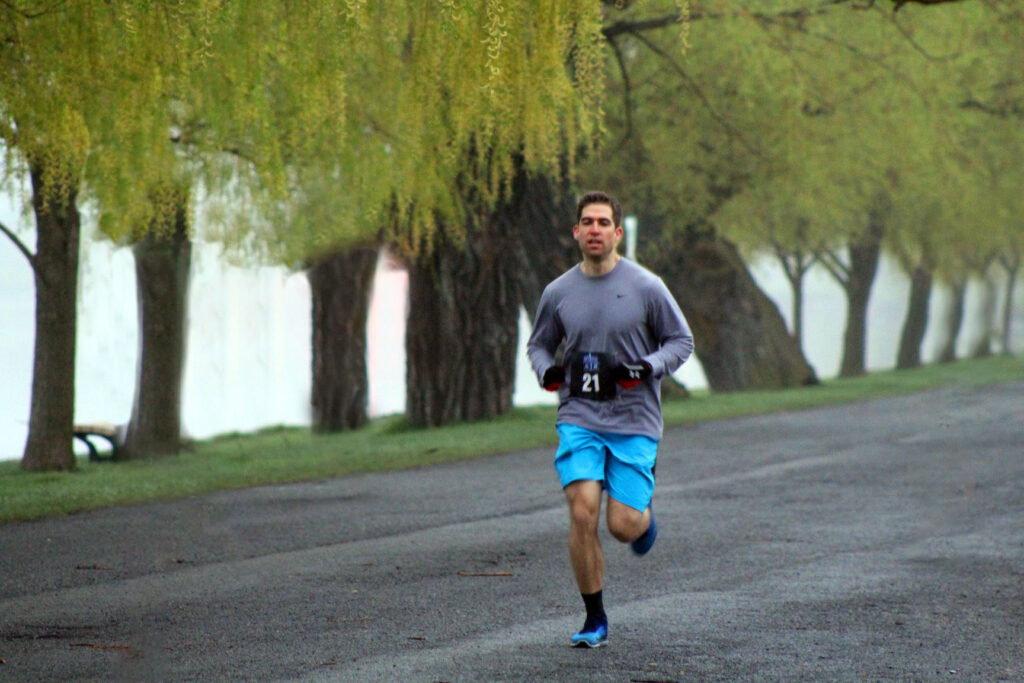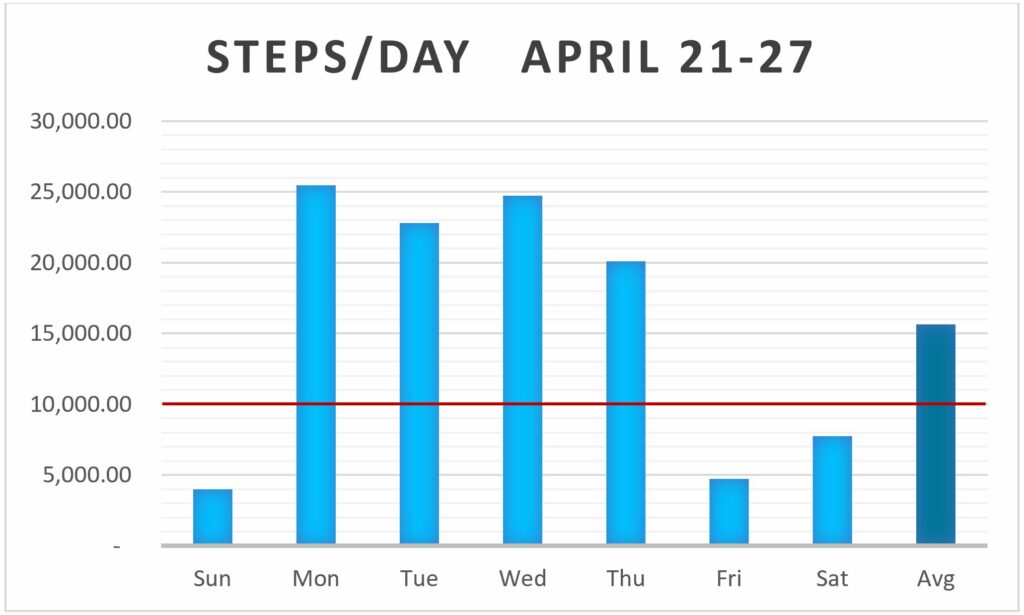2019 Fitness Goal – 5k Run
Late last year, I took note of my dad’s all-time 5k personal record of 17 minutes and 45 seconds. This year, I’ve made it my goal to beat it. He accomplished this when he was 27… my current age. And, I need to prove I’m better at 27 than he was obviously. So each month I’m competing in a 5k and tracking my progress to hopefully best his time. This month I ran a 5k in support of cancer and in honor of my high school friend’s parent that struggled with cancer.

My finishing time was 20 minutes and 17 seconds. It was a lot slower than my recent sub 20 minute training runs but at least I won my age group. I’m definitely looking to improve upon this in June but it’s all about consistency with training runs and training intensity. Below, is a summary of the five training runs I like to complete during a week. I look forward to expanding on this training routine in an upcoming post.
- Interval/Speed Day: 2.5 mile run consisting of 100 meter, 200 meter and/or 400 meter sprints.
- Hill Day: 3 mile run with about a mile worth of hills. I run the hills hard and the flats easy.
- Endurance Day: 4 mile run at a consistent pace that’s slower than race day.
- Fartlek Day: 3 mile run where I’m rotating pace every half mile (half mile fast, half mile slow).
- Race Day: 5k run at a consistent pace that’s intended to meet or beat my personal record.
Daily Activity Tracking
It’s been said that sitting is the new smoking or sitting is the new cancer. Every year studies have shown the amount of time we spend in an idle state (sitting or standing) is increasing and thus causing many issues, both short term (back, joint and nerve pain) and long term (cancer, heart disease and stroke). It’s also been shown that people who are more active tend to be happier and live longer. And, that a daily 1 hour workout doesn’t offset the harm caused by spending the other 23 hours idle. This is what has led me to live a more active lifestyle. Each week I like to track my step count which I’ve found to be a good indication of my activity level. Here’s a recent week of mine:

The red line in the chart above shows the CDC’s recommendation of 10,000 steps per day. My average was slightly above 15,000 which is good, but clearly I’m not up to much on the weekends. As the weather gets nicer, I can see this changing quickly.
It’s important to note that the average american only walks 3,000 – 4,000 steps per day. This is clearly a cause for concern. Even if you’re not motivated enough yet to increase your step count, take a look at your current activity and start monitoring it. Most phones already track steps. Open up your phone now and see how you’ve been doing the past week! (How to Track Steps on Your iPhone or Android Device)
Stay tuned for an upcoming post about how I get 20,000 – 25,000 steps per day at a desk job.
New Sleep Study – Top 10 Sleep Myths
My favorite research article of the month is the one linked below about sleep myths. So often you hear people say they’ll sleep when they’re dead, or setting multiple alarms helps them wake up, or that you can adapt to less sleep. All of these statements and more are far from the truth. It’s important to stick to a regular sleep schedule of 7-8 hours a night. Make sure you’re not consuming caffeine or alcohol close to bedtime. Limit your screen time within a hour of bedtime and try not to nap during the day. It’s also helpful to have a cool, quiet and dark room to sleep in. All of these are important in order to achieve high quality sleep… which can directly affect your mood, drive and success the next day.
Wake up, people: You’re fooling yourself about sleep, study says
How dangerous is the sunscreen you’re using?
We’ve all been taught that using sunscreen is important to protect against skin cancer. But, we’ve rarely been told that ~90% of the sunscreen sold in stores have side effects that could be equal to, if not worse than skin cancer. That’s because most sunscreen has evolved to become cheaper, absorb quicker and become less visible. This has caused companies to use chemical sunscreens. Common chemicals used are oxybenzone, avobenzone and octocrylene. The FDA has warned against these chemicals because they can cause cancer, developmental/reproductive toxicity, and organ system toxicity. So, what can you do?
- Discover: If you have sunscreen now, go to the Environmental Working Group’s website (https://www.ewg.org/sunscreen/) and search for your current sunscreen. Find it and click it for details.
- Analyze: What is it rated? What are the health concerns with it? Does it provide a good UVA/UVB balance? My recommendation is that if it’s higher than a 2/10, you need a new sunscreen. If it’s not higher than a 2/10 then good job. You’re set.
- Compare: If you don’t have sunscreen or your current sunscreen is higher than a 2/10, use the website listed above to find a healthier one. Alternatively, I use and recommend Blue Lizard mineral sunscreen. It has the best overall score according to the Environmental Working Group’s website and is rated 4.5/5 stars on Amazon.
The healthier sunscreens are mineral based sunscreens. This means instead of absorbing into your skin, they sit on your skin to protect. You may notice that this leaves your skin a little greasier and whiter. But, with those short term annoyances, you gain the long term benefits of protecting against skin cancer while not inducing other long term issues (cancer, developmental/reproductive toxicity, and organ system toxicity).
Bonus tip: Never buy your sunscreen in a physical store. There’s too many options with poor EWG scores and it’s hard to get distracted by all the marketing. Use the EWG’s website to find the sunscreen that suits you best and buy online. You’re sure to get a safer product.
Summary
A 5k time that needs improvement, pretty good daily step count, debunking sleep myths and selecting healthy sunscreens. I’d say that’s a pretty good start to the monthly physical health updates. In the future, I’d like to start creating posts with a single focus that go into each of these categories in more depth. Until then, hope you enjoyed this post and learned something new.
If you liked this post, please subscribe to the weekly newsletter or follow the social media accounts for the latest content!
Disclosure: I frequently review or recommend products and services that I own and use. If you buy these products or services using the links on this site, I receive a small referral commission. This doesn’t impact my review or recommendation.

